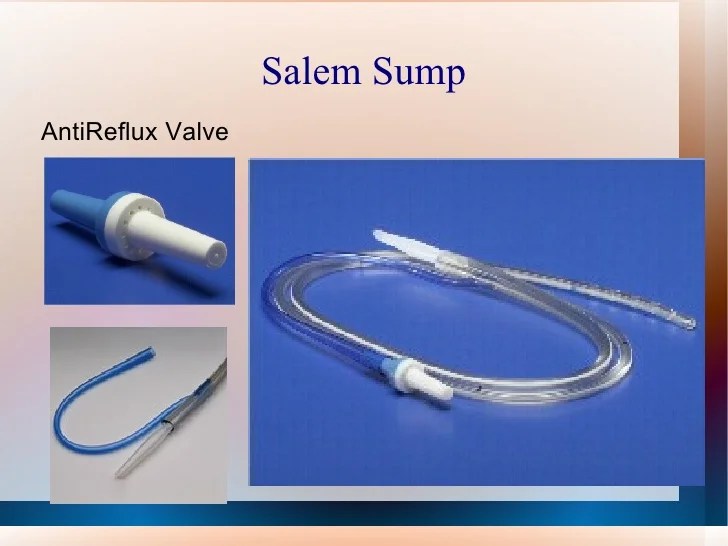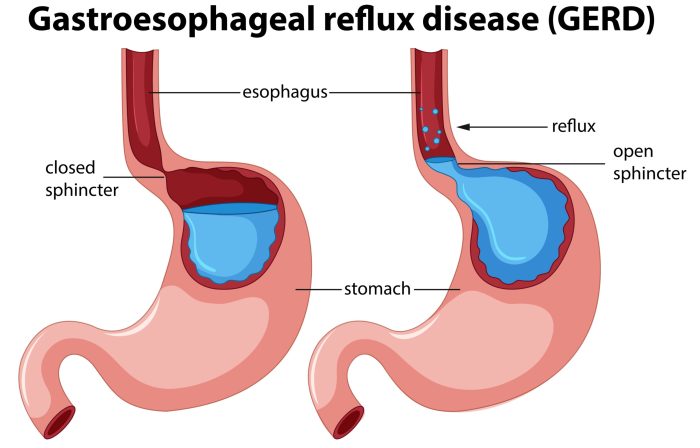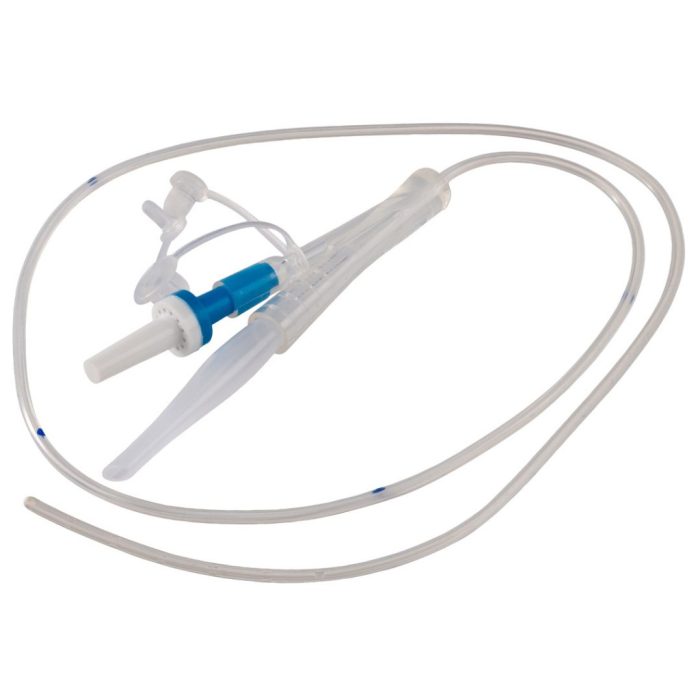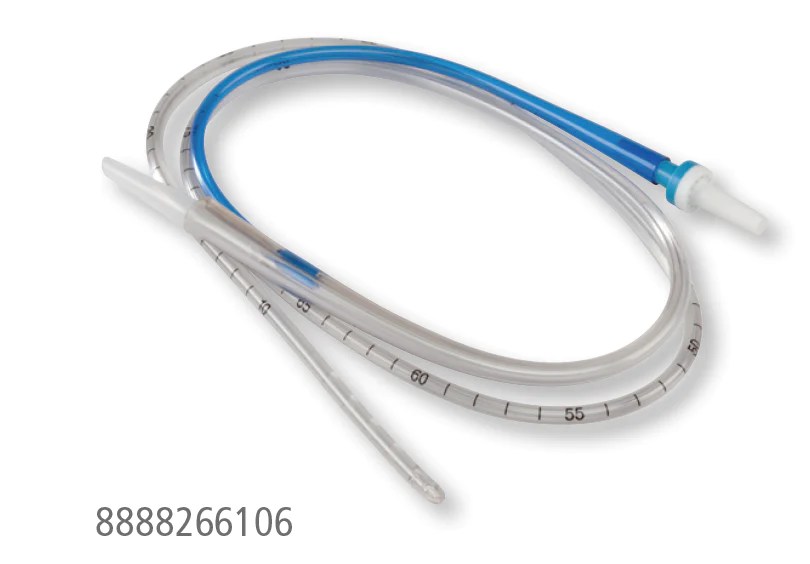Anti reflux valve ng tube – In the realm of medical advancements, the anti-reflux valve NG tube emerges as an indispensable tool for managing gastrointestinal reflux and preventing aspiration. This comprehensive guide unravels the intricacies of this device, its indications, insertion techniques, nursing considerations, and potential complications.
As a healthcare professional, delving into the world of anti-reflux valve NG tubes is essential for providing optimal patient care. This guide equips you with the knowledge and skills necessary to effectively utilize this device, ensuring the well-being of your patients.
Anti-Reflux Valve NG Tube Definition
An anti-reflux valve NG tube is a specialized medical device designed to prevent the backflow of gastric contents into the esophagus. It is commonly used in patients with conditions that impair the normal function of the lower esophageal sphincter, such as gastroesophageal reflux disease (GERD).
The anti-reflux valve NG tube consists of a thin, flexible tube with a weighted tip and an inflatable balloon near the distal end. The balloon is designed to create a seal against the stomach wall, preventing gastric contents from flowing back into the esophagus.
Components of an Anti-Reflux Valve NG Tube
- Tube:The tube is made of a flexible material, such as silicone or polyurethane, and is designed to be gentle on the patient’s nasal passages and esophagus.
- Weighted Tip:The weighted tip helps to guide the tube into the stomach and keep it in place.
- Inflatable Balloon:The balloon is made of a soft, pliable material and is inflated with air or water to create a seal against the stomach wall.
- Control Valve:The control valve allows the healthcare provider to inflate and deflate the balloon as needed.
Indications for Use: Anti Reflux Valve Ng Tube

An anti-reflux valve NG tube is primarily employed in medical scenarios where the prevention of gastric contents refluxing into the esophagus or respiratory tract is crucial. It serves as a preventive measure against complications and aids in managing symptoms associated with various medical conditions.
One notable indication for using an anti-reflux valve NG tube is in patients who have undergone upper gastrointestinal surgery, such as esophageal or gastric resection. During these procedures, the normal anatomical barriers that prevent reflux can be compromised, increasing the risk of aspiration and other complications.
The anti-reflux valve in the NG tube helps mitigate this risk by creating a one-way passage for gastric contents, effectively preventing their backflow into the esophagus.
Prevention of Aspiration
Aspiration, the entry of gastric contents into the respiratory tract, can lead to serious complications such as pneumonia or respiratory distress syndrome. An anti-reflux valve NG tube plays a crucial role in preventing aspiration by creating a physical barrier that blocks the upward movement of gastric fluids.
This is particularly important in patients with impaired gag reflexes, altered consciousness, or those receiving mechanical ventilation, as they are at an increased risk of aspiration.
Management of Gastroesophageal Reflux Disease (GERD)
GERD is a condition characterized by the frequent reflux of gastric contents into the esophagus, causing symptoms such as heartburn, regurgitation, and esophageal irritation. An anti-reflux valve NG tube can provide relief from these symptoms by preventing the backflow of gastric acids and other irritants into the esophagus.
Other Indications
Beyond the primary indications discussed above, an anti-reflux valve NG tube may also be used in other situations where the prevention of reflux is desired. These include:
- Patients with severe nausea and vomiting who are at risk of aspiration
- Patients receiving enteral nutrition through an NG tube to prevent reflux of gastric contents into the feeding tube
- Patients with tracheostomies to prevent aspiration of gastric contents into the trachea
Insertion and Management

Insertion and management of an anti-reflux valve NG tube involve a step-by-step process to ensure proper placement and functionality. This includes measuring, inserting, securing, and monitoring the tube.
It is crucial to follow the instructions and guidelines provided by healthcare professionals during the insertion and management of the anti-reflux valve NG tube to minimize risks and ensure optimal outcomes.
Anti reflux valve ng tube is a medical device used to prevent reflux of gastric contents into the esophagus. For more information on medical topics, you can refer to reliable sources like nbme 9 step 2 ck answers . Coming back to anti reflux valve ng tube, it is important to use it as per the doctor’s instructions to ensure its effectiveness.
Measuring the Tube, Anti reflux valve ng tube
Before inserting the NG tube, it is essential to measure the length required to reach the stomach. This is done by measuring from the tip of the nose to the earlobe and then to the xiphoid process (the small, sword-shaped cartilage at the bottom of the breastbone).
Mark the measured length on the tube using a piece of tape or a marker.
Inserting the Tube
Lubricate the tip of the tube with water-soluble jelly or lubricant. Gently insert the tube through the nose and advance it slowly, guiding it with a finger along the nasal passage. If resistance is encountered, slightly rotate the tube while advancing it.
Once the marked length is reached, the tube should be in the stomach. Verify placement by aspirating gastric contents or by injecting a small amount of air and listening for a gurgling sound.
Securing the Tube
Secure the tube to the patient’s face using adhesive tape or a commercial tube holder. Ensure the tube is not too tight or too loose and that it is not causing any discomfort.
Monitoring the Tube
Regularly monitor the tube for proper placement and functionality. Check for any signs of displacement or obstruction, such as difficulty aspirating gastric contents or changes in the gurgling sound. If any issues arise, consult a healthcare professional promptly.
Nursing Considerations

Nursing care for patients with an anti-reflux valve NG tube is crucial to ensure proper tube function and prevent complications. Nurses play a vital role in monitoring patients, managing feeding protocols, and maintaining the tube to optimize patient outcomes.
Monitoring for Complications
Nurses should closely monitor patients for potential complications associated with anti-reflux valve NG tubes. These include:
- Aspiration: Assess for signs and symptoms of aspiration, such as coughing, wheezing, or decreased oxygen saturation.
- Gastric distension: Observe for abdominal distension, nausea, or vomiting, which may indicate tube blockage or malposition.
- Tube dislodgement: Regularly check the tube’s position using a stethoscope or auscultation.
- Skin irritation: Inspect the skin around the tube insertion site for redness, swelling, or infection.
Feeding Protocols
Nurses are responsible for administering feedings according to prescribed protocols. These protocols typically involve:
- Feeding rate and volume: Monitor the rate and volume of feedings to prevent gastric distension or aspiration.
- Feed composition: Ensure the feed meets the patient’s nutritional needs and is appropriate for their medical condition.
- Feeding intervals: Administer feedings at regular intervals to maintain blood glucose levels and prevent gastric stasis.
Tube Maintenance
Regular tube maintenance is essential to prevent clogging, ensure proper function, and minimize the risk of infection. Nurses should:
- Flush the tube: Regularly flush the tube with water or saline to remove secretions and prevent blockage.
- Secure the tube: Secure the tube to the patient’s nose or face using tape or a stabilization device to prevent dislodgement.
- Change the tube: Replace the tube as per prescribed intervals or if it becomes damaged or clogged.
Complications and Troubleshooting

Anti-reflux valve NG tubes, while beneficial, can occasionally lead to complications. Understanding potential issues and troubleshooting techniques is crucial for effective patient care.
One common complication is tube dislodgement, which can occur due to patient movement, improper placement, or excessive vomiting. To address this, ensure correct tube placement, secure it properly, and monitor the patient for signs of displacement.
Tube Blockage
Another potential issue is tube blockage, which can result from mucus buildup, medication precipitation, or food particles. To prevent and manage blockages, administer prescribed medications as directed, use a feeding pump to maintain tube patency, and flush the tube regularly with water or saline.
Esophageal Erosion
Prolonged use of anti-reflux valve NG tubes can occasionally cause esophageal erosion. To minimize this risk, monitor the patient for any discomfort or tissue damage, and rotate the tube placement site every few days.
Alternative Methods
Alternative methods for managing gastrointestinal reflux or preventing aspiration include:
- Medication:Proton pump inhibitors (PPIs) and histamine-2 receptor antagonists (H2RAs) can reduce stomach acid production, which can help prevent reflux.
- Lifestyle changes:Avoiding certain foods and drinks, eating smaller meals, and elevating the head of the bed can help reduce reflux symptoms.
- Surgical procedures:Fundoplication is a surgical procedure that can create a valve-like mechanism at the top of the stomach to prevent reflux.
Comparison with Anti-Reflux Valve NG Tubes
Compared to anti-reflux valve NG tubes, alternative methods offer the following advantages:
- Less invasive:Medication and lifestyle changes are non-invasive, while fundoplication is a surgical procedure.
- More comfortable:Anti-reflux valve NG tubes can be uncomfortable, especially for long-term use.
However, alternative methods may also have some disadvantages:
- Less effective:Medication and lifestyle changes may not be as effective as anti-reflux valve NG tubes in preventing reflux.
- Not suitable for all patients:Fundoplication is not suitable for all patients, such as those with severe gastrointestinal disorders.
The choice of method for managing gastrointestinal reflux or preventing aspiration depends on the individual patient’s needs and preferences.
User Queries
What is the primary function of an anti-reflux valve NG tube?
An anti-reflux valve NG tube is designed to prevent the backflow of gastric contents into the esophagus, thereby reducing the risk of aspiration and gastrointestinal reflux.
How is an anti-reflux valve NG tube inserted?
Insertion involves passing the tube through the nose, down the esophagus, and into the stomach. The tube is then secured in place using tape or a fixation device.
What are the potential complications associated with anti-reflux valve NG tube use?
Potential complications include tube dislodgement, blockage, esophageal perforation, and aspiration pneumonia.